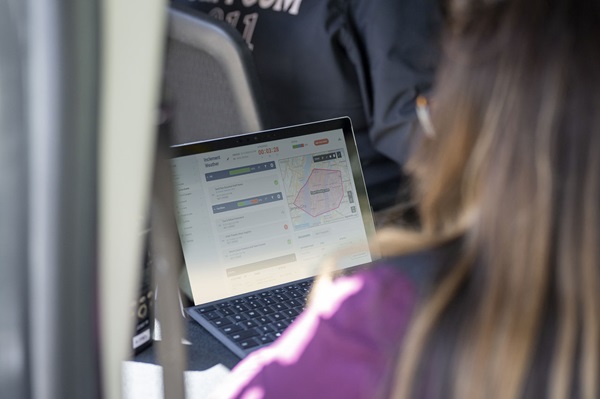All types of businesses must plan for emergency situations, but preparedness is especially important for hospitals. Without comprehensive emergency response and business continuity plans, hospitals may incur catastrophic human and financial losses in the event of a crisis.
In order to respond and recover from emergencies, many hospitals have implemented a HICS: hospital incident command system. HICS is an incident management system designed specifically to help hospitals protect their staff, patients and visitors in all circumstances, including standard operations, planned events and emergencies.
What is a HICS (hospital incident command system)?
In the late 1980s, the California Emergency Medical Services Authority developed the hospital incident command system. HICS was designed as a hospital-specific incident management system that can be used to prepare for, respond to and recover from crises, planned events and evolving threats.
HICS is designed to be a flexible system that can adapt and scale according to any hospital’s unique needs, resources and threats. Hospitals that adopt HICS gain the benefits of using a proven system that’s nationally recognized and designed to integrate with local authorities and community organizations. HICS is used at hospitals throughout the U.S. and internationally.
HICS depends on several fundamental elements, including accountability, communication and a predictable chain of command. Additionally, it relies on the principle of Management by Objectives, which follows a defined series of steps: evaluating the problem, making a response plan and assigning resources to implement the plan.
Emergency vs. non-emergency operations
HICS is based on the National Incident Management System’s Incident Command System (ICS) and includes modifications designed to address challenges and events specific to the healthcare environment. HICS is also closely related to HEICS (hospital emergency incident command system); the main difference is that HICS is designed to address non-emergency situations as well as emergencies.
Many hospitals implement HICS specifically to prepare for emergency events. However, this system can also offer benefits in non-crisis situations. For example, HICS can simplify large planned events, such as blood drives and community wellness outreach programs, as well as smaller incidents, such as moving patients to different wards or hospital departments.
HICS personnel
The exact structure of a hospital’s HICS organization chart depends on the institution’s size, location, resources and potential threats. A large hospital in a big city may need dozens of people to perform specific functions in the HICS. However, a small rural hospital with fewer staff members may need each person to accept more than one role in the system.
When choosing people for your hospital incident command system, the first role to fill is the incident commander position. Generally, an incident commander should have formal training and/or experience in emergency preparedness. Other critical roles include public information officer, security officer and liaison. These individuals typically report to the incident commander.
There are several other pieces of a HICS org chart. Most hospitals assign individuals to be in charge of logistics, operations, finance and planning. Each of these chiefs may have one or more individuals reporting to them. For example, the logistics chief may lead a team that includes department leaders in charge of facilities, communications, materials, transportation and nutritional supply. Likewise, the operations chief may manage leaders from various departments, such as triage, home services, maternity, in-patient and out-patient care.
Emergency preparedness tasks
Once a HICS has been created and personnel named, it’s vital to create emergency response plans for all the potential threats to the hospital. This may include local disasters, such as severe weather events and fires, as well as illness outbreaks and violent attacks. Hospitals also need to prepare for power and network outages.
The HICS team can also create procedures for non-emergency events and situations. Having plans in place ensures that everyone understands their responsibilities and helps reduce errors and inefficiencies during the execution of these events.
Finally, it’s important to continually analyze and adapt emergency procedures. Threats can change, and outdated emergency procedures can severely impact emergency response operations. Drills (e.g., tabletop exercises and fire drills) are excellent tools for testing and modifying emergency plans. After Action Reviews (following drills and/or real-world events) can also help HICS personnel evaluate response procedures, documentation and communication tools.
Communication tools for hospitals
Communication is a crucial aspect of a HICS. The incident manager must be able to communicate with all other members of the HICS as well as external assets, including law enforcement personnel. The incident management team must have the tools to send emergency alerts to staff, patients and visitors. Finally, internal and external response personnel must be able to collaborate and share data to develop and execute coordinated response procedures.
The Rave Mobile Safety Suite for hospital safety
A hospital incident command system can significantly improve the speed and efficacy of response procedures during emergencies. Additionally, HICS can also support non-emergency operations, giving administrators the tools they need to keep patients and staff safe during planned events. An effective HICS supported by reliable communication tools protects people, profits and reputation.
The Rave Mobile Safety Suite offers communication solutions for hospitals and other healthcare institutions. Our incident management platform can augment your institution’s HICS by simplifying data sharing and facilitating reliable internal and external communications.
An incident manager can access the system from anywhere and quickly coordinate with 9-1-1, first responders, local government authorities and law enforcement. Our platform allows users to share crucial data, including floor plans, egress routes and muster locations, with collaborators. Automation tools simplify task assignment and management, ensuring that no steps get missed and minimizing inefficiencies.
We also provide a range of critical communication tools, including a mass notification system and personal safety apps. With the Rave Mobile Safety Suite, HICS personnel can quickly be notified of an emergency via multiple channels, from voice calls to SMS text. To get more information about our prebuilt communication systems or customizable incident management solutions, contact our team.





Comments are closed here.